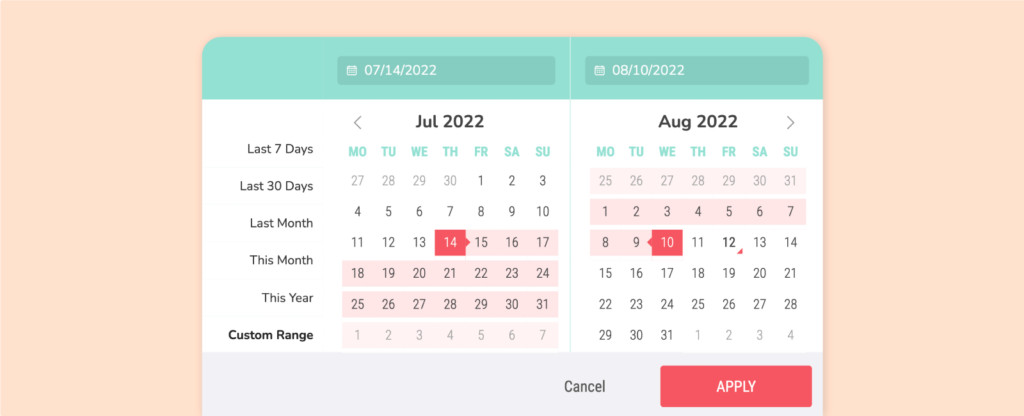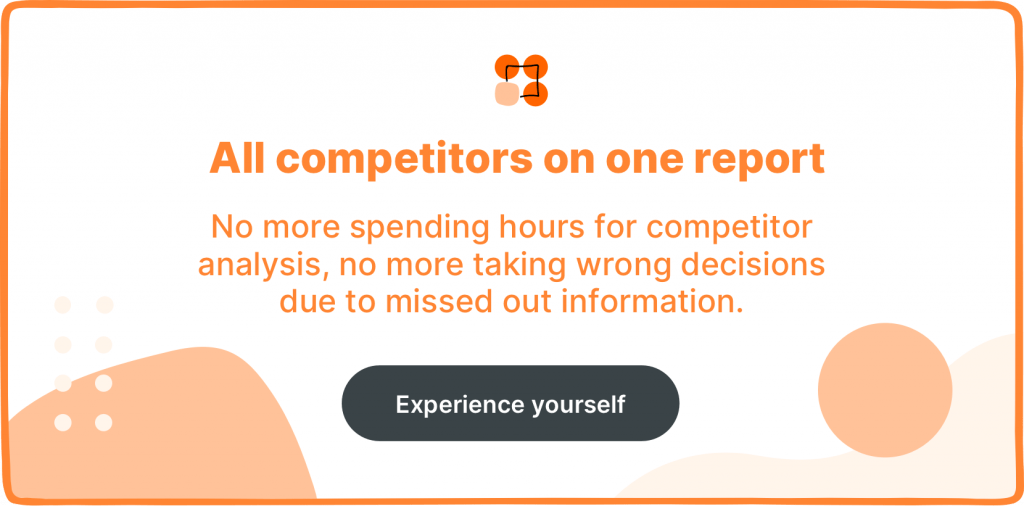Summarize this article via
In social media management, competitive benchmarking is a goldmine of insights.
Brands are competing for growth, reach, engagement, and conversions—all from the same target audience.
Speaking of, do you know who your competitors are?
Will you be the first to know when their growth shoots up rapidly or when it plummets?
How do you check your competitors’ growth rate on social media?
This article will lay it out for you in simple, clearly illustrated steps. Our tool of choice is our own Sociality.io. We think you’ll see why.
Our walkthrough will show different social networks. That’s because these steps are applicable to all of them. Whichever network you’re running your social media marketing campaigns on, you can track your competitors’ growth rate with this guide.
That’s thanks to Sociality.io’s unified and orderly dashboard, which makes it seamless for you to manage not just multiple accounts but multiple accounts on different networks.
What is follower growth on social media?
Follower growth on social media is measured by dividing the net number of new followers/subscribers over follower count at the starting date. Tracking follower growth helps you to measure your social media teams’ efforts. Although follower growth on social media is considered a vanity metric, practically all social media teams include it in their KPIs.
What are good follower growth rates?
You can easily measure your account follower growth over time. The process can even be done manually inside an excel table. However, how do you understand whether your profiles grow at the right speed and whether you should optimize your strategies?
Different resources indicate platform-related benchmarks. It is between 1.5% and 2.5% on Instagram, up to 2.2% on Facebook, and about 4% on Twitter.
However, there is no proper way to set accurate benchmarks using aggregated data pools.
Good follower growth rates vary not only from one industry to another but also from one country to another. By following common sense, one can easily expect Instagram profiles to grow fast in India but grow slowlier for B2B business that offers consultations for outsourcing software development.
Thus, solutions like Socilaity.io helps teams to set accurate and up-to-date good follower growth rate benchmarks. Simply connect competitors with our system, and we’ll show historical follower growth rates. You can also bring competitors’ and your social media accounts inside one growth chart and visually see whether your performance is good.
How to calculate follower growth?
The formula for followers’ growth rate on all social media platforms is simple.
Follower growth rate = Net followers / Starting follower count * 100%
For example, if at the beginning of the month you had 30K subscribers, now you have 35K.
Follower growth rate = (35K-30K)/30K*100%=16,6%
Free tools to track follower net
Numerous social media analytics tools exist on the market that helps you to automate monitoring follower count for both your social profiles as well as the competitors’.
However, if you are tight on a budget, we have prepared a simple excel table for you. There are different views and allow you to track follower growth on a daily, weekly, monthly, and quarterly basis.
The problem of fake followers
Follower growth on social media often involves tremendous efforts from social media teams. Not only do they need to prepare content plans, engage with audiences, curate user-generated content, listen to sentiment analysis and monitor performance metrics, but they also run social media ads and conduct competitor analysis.
Thus, businesses often cut corners and purchase fake followers. If you want to learn more about fake followers and how to clean up your accounts, check out our article: How to clean up Instagram from bots and dead accounts?
How to track competitors’ followers’ growth rate on social media using Sociality.io
Step 1: Go to the Competitors section
We take off at the Competitor Analysis module.
Choose all the relevant competitors whose follower growth you’d like to track. You can focus on one whose target audience intersects heavily with yours, but that won’t give you the full picture. Try to go for a few.
Step 2: Choose a social media platform

Now you need to pick the relevant social network: Facebook, Instagram, Twitter, or YouTube.
You can always return to this step if you’re interested in checking your competitors’ follower growth across different social networks.
One social network at a time just makes for a neater presentation and easier analysis.
Step 3: Set the time frame
Next, pick the period over which you want to track your competitors’ growth.

Choose a short one if you’re only interested in how your competitors’ following has grown recently. If you’re interested in seeing how it has grown over a long span of time, simply set the starting point farther back.
You can set the exact dates you want. But the preset options to the left are quick and handy if you’d like data on the past seven days, the past 30 days, the previous month, or the beginning of the year until now.
Step 4: Generate the report
After picking all the right filters and options to give you relevant results, you simply need to hit “Create” to start seeing the report.
This is where the fun begins.
Let’s go through all the data you’ll receive at this point and how it reveals your competitors’ growth rate.
For example purposes, we’ll be using relatable brands like Starbucks, Burger King, Tacobell, etc. You’ll know to substitute these with your actual direct and indirect competitors, no doubt.
And remember, if we’re just trying to figure out the growth rate and the dynamics of our competitors’ following, these methods work just the same—regardless of the exact target audience.
Competitor analysis report example
Chart 1: Total Followers
If you’re going to be checking your competitors’ growth rate, it’s probably best to know how large their following is right now.
This is crucial. Without it, you won’t be able to tell what, say, an average follower growth rate of 400 users means in the context of the brand. If the brand has a few dozen followers, that’s a lot. If it has several thousand, it’s not as big a deal.
You’ll also get a lot of perspective from this if you’re analyzing multiple competitors simultaneously. It will give you a clear idea of how your competitors stack up against each other.
Chart 2: Followers
The Followers chart will show you how your competitors’ total following has changed over time.
Sure, this is an idea of the brand’s growth rate, but the data’s not immediately obvious. Knowing your competitors’ follower fluctuations is certainly important for other types of analysis. But when we’re specifically looking at the growth rate, we pay it a passing glance.
Chart 3: Growth of Followers
This is where you’ll want to pay most of your attention.
There’s a convenient line there (color schemes are changeable in settings), that helps you quickly separate between negative and positive growth.
Yet more, you can observe your competitors’ growth from day to day.
In short, the Growth of Followers chart is great for zooming in on interesting and significant periods, which can point to industry-wide trends.
Next comes the Growth Rate Summary Bar, which allows us to zoom out again and get a detailed snapshot.
Chart 4: Growth Rate Summary Bar
Look, now we can see:
- Fan growth
- Max. Daily Growth of Fans (your competitor’s best day)
- Min. Daily Growth of Fans (your competitor’s worst day)
- Daily Average of Growth of Fans
Pro tip: Check competitors’ growth rates automatically
Yes, automatically!
You can keep track of your competitors’ growth rate after only following these steps once. Just go back to the top and click the schedule icon.
You’ll then be able to schedule reports to be sent to your inbox automatically.
And at whatever frequency you like.
According to a report by the Content Marketing Institute, 52% of marketing teams are short on time. We understand.
Automatic reports keep you efficient without breaking a sweat.
It’s as easy as just fetching your fully detailed report in your email.
That’s all you’ll need to do to check your competitors’ growth rate on social media. Just follow these four steps, with particular attention to the fourth, and you’re good to go!
You’ve got competitors whose growth rate you can figure out now, so we’ll leave you to it. Come back for more of our guides and insights.




